CAA News Today
Centennial Reception at the Metropolitan Museum of Art
posted by Emmanuel Lemakis — Jan 27, 2011
 Come one, come all! Renowned for its glamorous parties, the Metropolitan Museum of Art will be hosting the CAA Centennial Reception during the 2011 Annual Conference in New York. Join your friends and colleagues, fellow conference attendees, and special guests for an unforgettable evening that will celebrate the beginning of CAA’s Centennial year.
Come one, come all! Renowned for its glamorous parties, the Metropolitan Museum of Art will be hosting the CAA Centennial Reception during the 2011 Annual Conference in New York. Join your friends and colleagues, fellow conference attendees, and special guests for an unforgettable evening that will celebrate the beginning of CAA’s Centennial year.
The reception will take place on Thursday evening, February 10, 7:30–9:00 PM, in the magnificent spaces of the Great Hall and the Temple of Dendur, and the passage of Egyptian art between them. It immediately follows the presentation of CAA’s 2011 Awards for Distinction in the Grace Rainey Rogers Auditorium. Wine, beer, soft drinks, and hors d’oeuvre will be served. The Met Store will be open too, making available its excellent inventory of gift items in addition to its superb collection of art monographs, catalogues, and books. CAA is grateful to Thomas Campbell, director of the Metropolitan, for generously opening the museum for this special occasion.
A $35 ticket is required for admission. Although online sales have ended, you may pick up a ticket at the Events Tickets booth in the Registration Area at the Hilton New York, 2nd Floor Promenade. CAA will not be selling tickets at the museum. The awards presentation, however, is free and open to the public.
The Metropolitan Museum of Art is located at 1000 Fifth Avenue at 82nd Street on Manhattan’s Upper East Side. To attend the reception, climb the stairs and walk through the main museum entrance. To attend the awards ceremony, taking place 6:00–7:30 PM, enter the auditorium through the 83rd Street entrance.
Conference attendees may also visit the museum free of charge during the week just by showing their registrant badges.
The Women’s Caucus for Art Announces 2011 Lifetime Achievement Awards
posted by Christopher Howard — Oct 18, 2010
The Women’s Caucus for Art (WCA), a CAA affiliated society, has announced the 2011 recipients of its Lifetime Achievement Award: Beverly Buchanan, Diane Burko, Ofelia Garcia, Joan Marter, Carolee Schneemann, and Sylvia Sleigh. In addition, WCA has given the 2011 President’s Art and Activism Award to Maria Torres.
The awards ceremony will be held on Saturday, February 12, 2011, during the annual WCA and CAA conferences in New York. The awards ceremony, free and open to the public, will take place from 6:00 to 7:30 PM in the Beekman/Sutton rooms at the Hilton New York, followed by a ticketed gala from 8:00 to 10:00 PM at the nearby American Folk Art Museum. Called LIVE SPACE, the gala will include a walk-around gourmet dinner with three food stations and an open bar, as well as the opportunity to meet the award recipients, network with attendees, and tour the museum.
Ticket prices for LIVE SPACE are $75 for WCA members and $135 for nonmembers (Prices will increase after January 12). CAA members receive a special price of $120. All tickets include reserved seating at the awards presentation. For more information or to purchase tickets, please visit the WCA website.
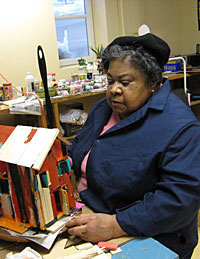 Beverly Buchanan
Beverly Buchanan
Born in 1940, Beverly Buchanan began creating art at an early age. She received a bachelor’s degree in medical technology from Bennett College in Greensboro, North Carolina, and then earned a master’s of science in parasitology and a master’s of public health degree, both from Columbia University. Rather than pursuing a degree in medicine, she decided to focus on making art. Buchanan studied at the Art Students League before moving to Georgia, where she still lives, dividing her time between there and Michigan. Her early sculptures were poured concrete and stone, and she has since worked in a variety of media, focusing on southern vernacular architecture. Buchanan is the recipient of a John Simon Guggenheim Memorial Foundation fellowship, a Pollock-Krasner Foundation award, and two National Endowment for the Arts fellowships. In addition, she was a Georgia Visual Arts honoree and a recipient of an Anonymous Was a Woman Award, and was honored with a Recognition Award by CAA’s Committee for Women in the Arts in 2005.
 Diane Burko
Diane Burko
A painter and photographer who resides in Philadelphia and Bucks County, Pennsylvania, Diane Burko has been involved in the feminist movement since the early 1970s. She is a founding member of WCA who also founded and organized the first multivenue feminist citywide art festival in Philadelphia, called “Philadelphia Focuses on Women in the Visual Arts, Past and Present,” also known as “Focus.” After that event, Burko continued her feminist commitment to the present day, serving on the WCA and CAA boards and on the Philadelphia Art Commission. She is now the chair of CAA’s Committee on Women in the Arts. Burko has been recognized with fellowships from the Bellagio Center, the Terra Summer Residency in Giverny, and the National Endowment for the Arts, among many other honors. One of the first movers and shakers in the feminist art movement, Burko has not yet been fully recognized for her important contributions.
 Ofelia Garcia
Ofelia Garcia
Ofelia Garcia is professor of art at William Paterson University, where she was dean of the College of the Arts and Communication for a decade. She earned her BA at Manhattanville College and her MFA at Tufts University, and was a Kent fellow at Duke University. Garcia has been on the art faculty at Boston College, a critic at the Pennsylvania Academy of the Fine Arts, director of the Print Center in Philadelphia, and president of the Atlanta College of Art and Rosemont College. Also a former president of WCA, Garcia has served on numerous boards, including those of CAA, the American Council on Education, and Haverford College; she was most recently board chair of the Jersey City Museum. Garcia now serves as vice chair of the New Jersey State Council on the Arts, on the Hudson County Art Commission, and on the boards of the Brodsky Center for Innovative Editions and Catholics for Choice.
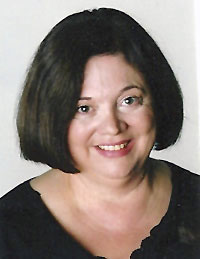 Joan Marter
Joan Marter
Joan Marter is distinguished professor of art history at Rutgers University. She received her PhD from the University of Delaware and has lectured and published widely. She is currently editor-in-chief of The Grove Encyclopedia of American Art, a five-volume reference set forthcoming from Oxford University Press in 2010. Marter serves as editor of Woman’s Art Journal, in print continuously for thirty-one years. She has published monographs on artists such as Alexander Calder and has written extensively about Abstract Expressionism and women artists. In 2004, she was inducted into the Alumni Wall of Fame at the University of Delaware. A former member of the CAA Board of Directors, Marter is currently president of the Dorothy Dehner Foundation for the Visual Arts.
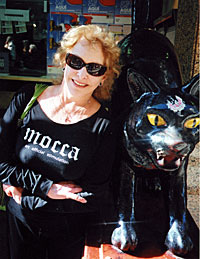 Carolee Schneemann
Carolee Schneemann
Carolee Schneemann is a multidisciplinary artist whose radical works in performance art, installation, film, and video are widely influential. The history of her imagery is characterized by research into archaic visual traditions, pleasure wrested from suppressive taboos, and the body of the artist in dynamic relationship with the social body. Her involvement in collaborative groups includes the Judson Dance Theater, Experiments in Art and Technology, and many feminist organizations. Schneemann has exhibited her work at the Museum of Contemporary Art in Los Angeles, and in New York at the New Museum of Contemporary Art, the Museum of Modern Art, and the Whitney Museum of American Art. Internationally, she has shown at the Museo Nacional Centro de Arte Reina Sofía in Madrid, the Moderna Museet in Stockholm, and the Centre George Pompidou in Paris. Her recent multichannel video installation Precarious was presented at Tate Liverpool in September 2009. The Samuel Dorsky Museum of Art at the State University of New York in New Paltz presented a major retrospective in summer 2010.
 Sylvia Sleigh
Sylvia Sleigh
Born in 1916 in Wales, Sylvia Sleigh paints portraits in a realist style, informed by sources ranging from the Pre-Raphaelites to famous portraits throughout history. Her first solo exhibition was held in 1953 at the Kensington Art Gallery; her most recent, at I-20 Gallery in New York, closed in January 2010. She married the art critic Lawrence Alloway in 1954, with whom she became part of the London avant-garde. They later moved to the United States, where she continued painting and showing her work. In 1970, Sleigh became actively involved in feminism and started painting life-size nudes in her precise, realist style. She was active in many of the first women-artist-run galleries, including A.I.R. Gallery and Soho 20. Her work can be found in numerous major public and private collections. Sleigh was honored with CAA’s Distinguished Artist Award for Lifetime Achievement in 2008.
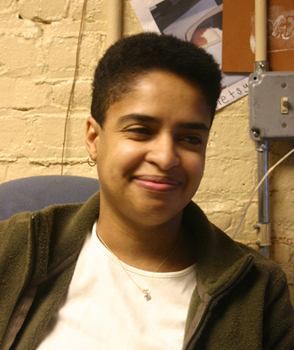 Maria Torres
Maria Torres
Winner of the 2011 Presidents Art and Activism Award is Maria Torres, president and chief operations officer of the Point Community Development Corporation, a nonprofit organization dedicated to youth development and the cultural and economic revitalization of the Hunts Point section of the South Bronx in New York. The Point’s mission is to encourage the arts, local enterprise, responsible ecology, and “self-investment” in a community traditionally defined in terms of its poverty, crime rate, poor schools, and substandard housing. In 1993, Torres received a BS from Cornell University. That same year, she launched the Neighborhood Internship Bank for at-risk youth, the first employment service of its kind in the South Bronx, and established La Marqueta, an outdoor community market aimed at lowering the barriers to the marketplace for neighborhood entrepreneurs. In 1994, Torres worked with Paul Lipson, Mildred Ruiz, and Steven Sapp to found the Point. Recipient of Union Square Award in 1998, she served on the Board of the Bronx Charter School for the Arts from 2002 to 2009.
About the Awards
The WCA Lifetime Achievement Awards were first presented in 1979 in President Jimmy Carter’s Oval Office to Isabel Bishop, Selma Burke, Alice Neel, Louise Nevelson, and Georgia O’Keeffe. Past honorees have represented the full range of distinguished achievement in the visual arts, and this year’s awardees are no exception, with considerable accomplishments and contributions represented by their professional efforts.
ProQuest Takes over the Bibliography of the History of Art from the Getty Research Institute
posted by Christopher Howard — Jun 23, 2010
The Getty Research Institute (GRI) has announced an agreement with ProQuest, an information-technology firm supporting global research, that will allow ProQuest to take over the indexing of the International Bibliography of Art (IBA), better known as the Bibliography of the History of Art (BHA). The agreement will not only provide a secure future for a resource considered central to the study of art history, but will also assure its continuing development and its accessibility to researchers around the world.
ProQuest will distribute IBA content created by GRI—covering the years 2008 through 2009—and build on it by adding new index records going forward. ProQuest will retain the editorial policies that made IBA a trusted and frequently consulted source in the field, continuing to provide full abstracts and subject indexing for its wide international and multilingual range of periodicals, monographs, and catalogues. Over time, ProQuest intends to expand coverage of art from Asia, Latin America, and Africa, in response to requests from art librarians and researchers. Since its founding in 1972, the bibliography has mostly covered European and American art from late antiquity to the present.
ProQuest, which operates expansive digital archives of newspapers, dissertations, and journals, also publishes specialist databases in the arts, such as ARTbibliographies Modern, Design and Applied Arts Index, and the International Index to Music Periodicals. Further, BHA, discontinued at the end of 2007, has long been available to researchers through ProQuest on the CSA Illumina platform. Users will welcome IBA with its expanded coverage and similar format, and ProQuest will enable IBA to be cross-searched with these other major bibliographies and complementary full-text resources.
As part of the ProQuest family, IBA will benefit from ProQuest’s acclaimed editorial operations, with its emphasis on subject expertise and manual indexing for specialist arts and humanities resources. ProQuest will make existing IBA content available immediately, and at the same time bring the database up to date—no additions have been made to it since December 2009—and continuing to add new records. IBA will migrate to ProQuest’s all-new platform in early 2011.
GRI has supported bibliographical services for art history since 1981, when it took over the International Repertory of the Literature of Art (RILA), which was then housed at the Sterling and Francine Clark Art Institute after many years. Beginning in 1985, GRI partnered with the French Centre National de la Recherche Scientifique (CNRS), which produced the Répertoire d’Art et d’Archéologie (RAA), a publication similar to RILA. RILA and RAA merged to become BHA, which appeared first in 1991, published by CNRS’s database production and distribution arm, the Institut de l’Information Scientifique et Technique (INIST).
BHA was produced jointly by GRI and INIST until 2008. Thereafter, GRI continued producing records under the new name of IBA before budgetary constraints led to the difficult decision to discontinue its support earlier this year. At this time, GRI made IBA (as well as the historical data in BHA and RILA) freely available on its website, so the historical data would continue to aid researchers. Thomas Gaehtgens, GRI director, confirms that “we will continue to make the historical BHA and RILA data available on the website free of charge to researchers who access it.”
New CAA Member Benefit: Humanities E-Book
posted by Nia Page — Dec 04, 2009
 Humanities E-Book, a project of the American Council of Learned Societies (ACLS), offers unlimited access to its collection of nearly three thousand cross-searchable, full-text titles across the humanities and related social sciences. Titles, which include fifty-six CAA Monographs on the Fine Arts, have been selected and peer reviewed by ACLS constituent learned societies for their continued importance and value in teaching and researching. The collection, which grows by about five hundred books a year, includes both in- and out-of-print titles published from the 1880s to the present. Humanities E-Book titles also link to publishers’ websites and to online reviews in JSTOR, Project MUSE, and other sites.
Humanities E-Book, a project of the American Council of Learned Societies (ACLS), offers unlimited access to its collection of nearly three thousand cross-searchable, full-text titles across the humanities and related social sciences. Titles, which include fifty-six CAA Monographs on the Fine Arts, have been selected and peer reviewed by ACLS constituent learned societies for their continued importance and value in teaching and researching. The collection, which grows by about five hundred books a year, includes both in- and out-of-print titles published from the 1880s to the present. Humanities E-Book titles also link to publishers’ websites and to online reviews in JSTOR, Project MUSE, and other sites.
Individual Subscriptions
As a special benefit of CAA membership, individual members can acquire a twelve-month, renewable subscription to Humanities E-Book for $35, which helps sustain the resource for the entire scholarly community.
Individual subscriptions are an attractive option for those whose institutions do not already subscribe to Humanities E-Book, or for CAA members who might not be affiliated with a subscribing institution. Please check this list to see if your institution subscribes.
When completing the Humanities E-Book’s online purchase module, choose the College Art Association from the Society Affiliation pull-down menu and enter your CAA member number. Be sure to review the terms of service before subscribing. For inquiries, please write to subscriptions@hebook.org or call 212-697-1505.
Institutional Subscriptions
Humanities E-Book offers a special 10 percent discount on subscriptions to institutional CAA members. Subscriptions range from $450 to $3,125, depending on the size of your institution.
Institutional subscription information, including pricing, is available on the Humanities E-Book website. For a free trial, a subscription for your school, museum, or organization, or further information, please write to info@hebook.org and mention that you are an institutional CAA member.
CAA Member Survey Results
posted by Christopher Howard — Oct 15, 2008
CAA warmly thanks the 831 participants in a recent email survey, which was sent to 8,300 members whose database records indicate that their primary profession is: art/architectural historian, artist, administrator, curator, art-museum educator, or librarian. The results of the survey will be presented at the Board of Directors’ Strategic Planning Retreat on October 25, 2008, and will be incorporated into discussions on how to better serve all CAA members in the new strategic plan.
The survey contained one open-ended question: “What are the most pressing issues you face in your profession?” The following summary provides a synopsis of your responses, which are recorded in order of priority and frequency; many respondents gave multiple answers.
Art/Architectural Historians – 455 respondents
33% – Decrease in positions; increase in PhDs; reduction of tenured positions and increase in part-time and adjunct positions
17% – Difficulty finding publishers; insufficient number of art journals; decrease in presses publishing art history; tenure requirement for monographs vs. few presses publishing monographs
16% – Limited research funds and high cost of travel
13% – Work load vs. keeping up with the field and quality of life
11% – High cost of image reproduction; copyright restrictions
7% – Low salaries and need for pay equity
7% – Issues regarding resources and attention devoted to historical art vs. contemporary art; Western vs. non-Western art; national vs. global; traditional curriculum, research, and pedagogy vs. interdisciplinary curriculum, research, and pedagogy
7% – New technology demands: cost, training, accessibility
5% – Need for American public understanding of art and combating anti-intellectualism
4% – Viability, credibility, and relevance of art history to other disciplines
Artists – 305 respondents
40% – Earning enough to support creative work; finding jobs and job security
23% – Finding reliable galleries; support for exhibitions; support for creative work and research
19% – Need for exposure of work, networking, and negotiating the art world
17% – Low salaries and need for pay equity
13% – Reduction of tenured positions and increase in part-time and adjunct positions
5% – Maintaining art as a critical discipline on all levels of education
5% – Need for health insurance
5% – Heavy teaching load and higher expectations for productivity
5% – Need for greater preparation of entering students
Administrators – 47 respondents
45% – Decrease in federal, state, and private funding for research, travel, faculty, staff, and technology
10% – Decrease in scholarships and fellowships
10% – Reduction of full-time faculty and increase in part-time faculty
10% – Recruitment of qualified candidates for faculty positions given the expansion of disciplines and need for pedagogical expertise
7% – Decreased enrollment
6% – Need for pay equity between art historians and artists
5% – Work load vs. keeping up with the field
4% – Blurring of disciplines and need for curriculum revision; new forms of assessment
Curators – 14 respondents
44% – Financial stability of art museums; decrease in funds for research and scholarly exhibitions
19% – High stress, long hours, and diminished staff positions
15% – Devaluation of research
10% – How to communicate with the public
10% – Low salaries and need for pay equity
5% – Demands of exhibition funders
Art-Museum Educations – 6 respondents
25% – High stress, long hours, and diminished staff positions
10% – Maintaining links between museum educators and art historians
10% – Low salaries and need for pay equity
5% – Decrease in funds for public programs
Art Librarians – 4 respondents
30% – New technology equipment costs, training, and research
25% – Decreased funds for purchase of books and periodicals
10% – Recruitment of qualified candidates for staff positions
Because many respondents gave more than one answer, the percentages do not always add up to 100 percent.
New Study on PhD Completion
posted by Christopher Howard — Sep 09, 2008
Inside Higher Ed reports that a new study from the Council of Graduate Schools reveals that significant gaps exist—by demographic groups and academic disciplines—in who finishes PhD programs. Generally, foreign, male, and white students are more likely to earn their doctorates after ten years than are their counterparts who are American, female, or minority. The study is part of the council’s PhD Completion Project, a seven-year, grant-funded initiative that addresses the issues surrounding PhD completion and attrition.
The report, PhD Completion and Attrition: Analysis of Baseline Demographic Data from the PhD Completion Project, is the second in a series of monographs from the council. It focuses on ten-year and seven-year completion rates by demographic characteristics (gender, citizenship, and race/ethnicity) based on data, submitted by twenty-four institutions, on students who entered their PhD programs in academic years 1992–93 through 2003–4. The report presents cumulative and annual completion rates from various perspectives: overall, by field, by institution type, and by time of entry into the PhD program. Completion between years seven and ten is also discussed.
Report on Arts Education and Funding Published
posted by Christopher Howard — Sep 09, 2008
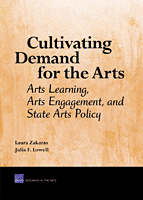 Policymakers have underestimated the critical role of arts learning in supporting a vibrant nonprofit cultural sector, according to a RAND Corporation report just published. The study, written by Laura Zakaras and Julia F. Lowell and entitled Cultivating Demand for the Arts: Arts Learning, Arts Engagement, and State Arts Policy, was commissioned by the Wallace Foundation and conducted by RAND.
Policymakers have underestimated the critical role of arts learning in supporting a vibrant nonprofit cultural sector, according to a RAND Corporation report just published. The study, written by Laura Zakaras and Julia F. Lowell and entitled Cultivating Demand for the Arts: Arts Learning, Arts Engagement, and State Arts Policy, was commissioned by the Wallace Foundation and conducted by RAND.
Despite decades of effort to make high-quality works of art available to Americans, demand for the arts has failed to keep pace with supply. Audiences for classical music, jazz, opera, theater, and the visual arts have declined as a percentage of the population, and the percentage of these audiences age thirty and younger has fallen even more.
“For decades, public funding of the arts has focused on building supply and expanding access to the arts, but it has neglected the cultivation of audiences capable of appreciating the arts,” said the coauthor Laura Zakaras, an arts researcher at RAND. “If we are not teaching the young how to engage with works of art, they are not likely to become involved in the arts as adults.”
Calling on evidence that experiencing and studying the arts in childhood increase the likelihood of arts participation later in life, the study recommends policymakers in both the arts and education to devote greater attention to cultivating demand for the arts by supporting more and better arts education.
At the public school level, researchers note, arts content standards have been almost universally mandated by the states and are broadening teaching practices, but state, local, and district policies are not providing the resources or time in the school day to implement these standards. In fact, there is evidence that high-stakes standardized testing has led to reduced class time for the arts and humanities in the past five years, according to the study. Arts organizations and colleges have been helpful in complementing school-based arts education, but it is not enough to fill the void.
Analyzing grant-making data, researchers show that state arts agencies, which have historically focused on providing grants to arts organizations, have directed less than 10 percent of their grants over the last twenty years toward activities that target arts learning. In most states, grants are not part of a comprehensive strategy to promote youth or adult arts learning.
However, some state arts agencies are bucking this trend. Rhode Island and New Jersey, for example, have forged relationships with their state departments of education, other state agencies, and members of the arts community to develop comprehensive statewide plans for improving arts education in public schools.
In New Jersey, the state’s arts agency helped develop a survey of arts education that has raised awareness of the inadequacy of its provision in the schools. Concerned residents are now pushing for the adoption of a number of new policies, including inclusion of per-pupil arts spending in New Jersey’s Comparative Spending Guide for public schools. In Rhode Island, the state arts agency was instrumental in successful efforts to adopt a standards-based high school graduation requirement in the arts.
Based on these findings, the authors recommend that state arts agencies and policymakers gauge how well their states are doing by conducting surveys of arts education; developing specific high school graduation requirements in the arts; recognizing and publicizing arts learning programs considered exceptional by experts in the field; and advocating for changes in state policy that increase the amount and breadth of arts learning opportunities. According to the authors, a healthy demand for the arts is critical to a vibrant nonprofit arts sector. Policies that focus on supporting the supply of the arts and broadening access to the arts are not sufficient for building that demand.


